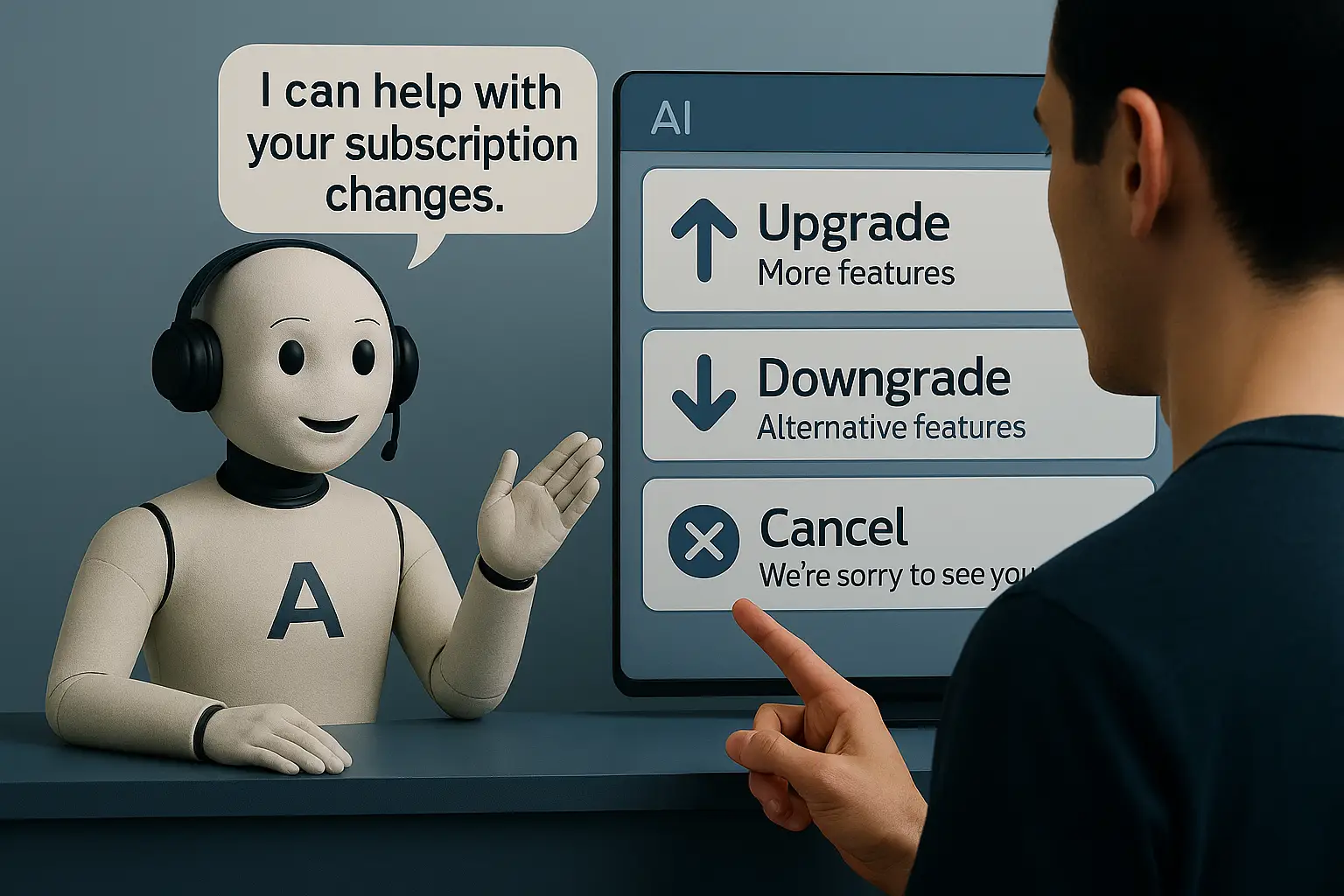No Buttons. No Wait. Just Smart AI IVR.
Transform your phone support with intelligent, people-driven automation. Unity Communications’ AI IVR replacement blends conversational AI with real human oversight to deliver fast, natural, and frustration-free service around the clock.
Trusted by Hundreds of Small and Medium-Sized Businesses for Reliable BPO Solutions











Why Choose Unity Communications?
Experience the smarter AI IVR replacement that serves, not frustrates. Unity Communications combines natural speech recognition with intelligent routing and human oversight for faster resolutions, lower costs, and superior customer experience.
Human-Verified Accuracy
Every answer is double-checked with expert oversight, ensuring your customers get it right the first time.
Custom-Fit AI Solutions
Your AI IVR is built around your workflows, not the other way around.
Real-Time Learning
Our system improves with every call, delivering sharper service over time.
Seamless Setup and Support
Get started fast with full-service onboarding and proactive account management.
24/7 Availability, Zero Pauses
Never miss a call again. Our AI IVR runs nonstop—even on holidays.
Smarter Automation, Lower Cost
Streamline operations, cut costs, and delight customers at scale.
Powered By Leading Technologies

















AI IVR in Action
From billing questions to tech support, see how our AI IVR replacement transforms real customer interactions. From routine questions to complex requests, our system responds naturally, resolves instantly, and seamlessly escalates to humans when needed.

When customers call about a billing issue
When customers call with questions about charges or payments, the AI responds immediately with accurate details. If the issue requires a deeper look, it’s escalated to a live agent with full context.

Appointment scheduling
Whether it’s booking a new slot or making a last-minute change, the AI handles scheduling requests smoothly—even after hours—to keep your calendar full and customers happy.

Order Status and Returns
Shoppers checking on delivery timelines or initiating a return get real-time updates and clear guidance—no need to wait for business hours.

Subscription changes
When users want to upgrade, downgrade, or cancel, the AI walks them through the process in a natural, reassuring way that reduces churn and confusion.

Tech support triage
Customers with technical issues are met with intelligent prompts that collect key details and prioritize urgent cases for live support, minimizing downtime and frustration.

Lead qualification and routing
New leads calling after seeing an ad or email are instantly engaged, qualified, and routed to your sales team—so no opportunity slips through the cracks.
Redesign Every Call Experience with Custom AI IVR
Natural, open-ended conversations
No scripts or menus—just human-like dialogue that feels effortless.
AI-powered smart routing
Quickly connects callers to the right solution or specialist every time.
Always-on support
Delivers consistent service 24/7—no hold times, no missed calls.
Customizable and data-aware
Adapts to your workflows, integrates with your systems, and gets smarter daily.
Our AI Agent Implementation Process
Discover and Assess
Identify customer service processes that can be improved with Ai vs. those best handled by human agents.
Build and Deploy
Develop your AI agent tailored to your business needs and integrate it into existing workflows.
Gather Human-Ai Insights
Create a continuous feedback channel between AI and human agents to improve performance and learning.
Refine and Calibrate
Fine-tune the AI model to adapt to changing customer needs and maintain quality.
Optimize for Performance
Use combined human insights and AI analytics to improve response efficiency, reduce costs and drive engagement.
Can AI replace traditional IVR?
Yes, AI IVR can replace traditional IVR systems in most routine, high-volume call scenarios. Unlike legacy systems that rely on rigid menus and scripted prompts, AI IVR uses natural language understanding and real-time adaptability to guide callers more efficiently. It reduces wait times, handles requests without escalation, and scales effortlessly with fluctuating demand. Businesses benefit from lower costs, easier updates, and better customer experiences—making AI IVR a practical, modern replacement for outdated phone systems.

Can AI IVR Replace Legacy Systems? Here’s What Businesses Need to Know
Traditional interactive voice response (IVR) systems have managed customer calls for decades. However, outdated menus, long wait times, and rigid scripts drive frustration. Businesses are now exploring smarter options, especially artificial intelligence (AI) IVR solutions that reduce friction and enhance experience.
AI is transforming phone support. With AI IVR gaining traction, business leaders and business process outsourcing (BPO) providers are rethinking what’s possible. This post explores how the technology compares to legacy systems and how to make the shift effectively.
From touch-tone to AI IVR: How call routing evolved
Phone support has changed a lot, but not always in ways that help customers. Most small- and mid-sized businesses still rely on outdated IVR menus that frustrate people instead of guiding them. Today’s callers expect faster answers and less friction.
The journey from “press 1” to natural conversation
It started with touch-tone IVR systems that required callers to “press 1” for every option. Early voice recognition tried to simplify this, but struggled with accents, background noise, or unclear intent. Here’s how those limitations added to caller frustration:
- Touch-tone inputs limited flexibility.
- Voice-only menus confused users.
- Misrouted calls increased wait times.
- There’s no clear path to resolution.
Why legacy systems became the standard
Despite their issues, these systems became standard for decades. They reduced staffing costs and added structure, even if they failed to deliver consistent customer experiences. Support felt slow, robotic, or unhelpful. It felt as if no one was listening. Worse:
- Long menus bury simple tasks.
- Repeating information frustrated callers.
- Call transfers lacked context or history.
Now, AI-based IVR changes what’s possible. It understands speech better, interprets intent more naturally, and adjusts conversations in real time. These systems learn from each interaction, helping you respond faster without sacrificing quality.
This shift will be especially noticeable in contact centers that want speed, savings, and better service. That’s where AI and BPO intersect. Whether you run a small in-house team or outsource support, smarter call routing brings considerable advantages.
Where traditional IVR falls short
Traditional IVR systems weren’t built for today’s customers. You need something faster, more responsive, and more capable of handling higher call volumes. The cracks in legacy systems show up everywhere, especially when your customers need help the most.
Menus, delays, and frustrated callers
Long, layered menus delay everything. Callers press button after button to reach the wrong department or hang up in frustration. Your team also feels the impact when queues grow and satisfaction drops. Here’s where the friction builds up most:
- Static menus feel outdated.
- Repeating prompts wastes time.
- Poor routing increases drop-off rates.
The longer the delay, the more frustrated your customer becomes. Every extra second reinforces the feeling that their time isn’t valued, shaping how they see your brand.
High costs and inflexible call flows
Legacy IVRs cost more than you think. Updates take time and need vendor support. You can’t easily tweak call flows, run experiments, or respond to seasonal spikes. That slows your team in key ways:
- Rigid workflows limit responsiveness.
- Vendor dependencies delay changes.
- Maintenance eats up IT resources.
These limitations prevent real-time improvement. Your IVR becomes a static system in a dynamic environment. When changes go live, the opportunity to improve customer experience might have passed.
Trouble with unexpected questions
Most older systems can’t handle live conversations. When callers go off script or use natural language, interactions break down. Your agents end up fielding problems the IVR should’ve dealt with. That’s where the experience starts to deteriorate:
- Scripts can’t adjust to real intent.
- Voice recognition struggles with nuance.
- Agents deal with more escalations.
This gap turns minor issues into full-blown support cases. Small, easily solvable requests get escalated unnecessarily, increasing cost and eroding customer satisfaction.
Why AI voice systems are gaining ground
Customers want fast, helpful support the moment they call. Outdated phone menus can’t keep up with changing expectations or growing call volumes. That’s why more innovative voice technology makes waves across small and midsize contact centers.
Smarter speech-to-text and natural language tech
You don’t have to rely on robotic prompts anymore. Today’s AI-driven IVR systems understand natural language and context better than before. They hear what callers say, convert it accurately, and act on intent with minimal delay. What’s changed most:
- Real-time speech recognition
- Accurate transcription in noisy environments
- Language models that understand tone and purpose
This upgrade helps reduce hold times and get people to answers faster.
What’s driving AI use for small- and medium-sized businesses (SMBs)
Running a contact center is expensive, particularly when you need flexibility. That’s where BPO for small businesses has found new value in AI. Lower costs, less overhead, and faster setup make advanced voice systems practical at any scale. Here’s what’s accelerating adoption:
- More affordable cloud infrastructure
- Voice AI tools tailored for SMBs
- Easier integration with customer relationship management (CRM) and support tools
- Pay-as-you-go pricing models that fit fluctuating call volumes
These changes bring speed, scale, and efficiency without complexity. More businesses now see AI in call centers as a way to reduce friction, improve first-call resolution, and simplify support. This shift reflects how AI-disrupting IVR is no longer a trend, but a practical solution.
How smart IVR systems work
AI voice systems go beyond simple prompts. They use advanced tools that listen, understand, and act fast. That’s where intelligent IVR stands apart from legacy systems. Instead of pressing buttons, callers speak naturally and get direct answers.
Key tech: voice recognition, language tools, and call flows
Automatic speech recognition (ASR) converts spoken input into text with high accuracy. Natural language understanding (NLU) interprets caller intent and context. These tools and smart call flows shift phone support from rigid scripts to flexible conversations. Here’s how that works in practice:
- Speech engines detect natural phrases.
- Language models analyze tone and purpose.
- Intelligent routing guides each caller to the right outcome.
- Systems adapt to the caller’s behavior.
This foundation powers an AI-powered IVR that responds fast and learns from every interaction.
Where human oversight still matters
Can AI replace call center agents? Not entirely. You still need people to handle complex, emotional, or sensitive cases. Even the most advanced systems have limits with ambiguity or rare issues. That’s where your team steps in:
- Humans add empathy and judgment.
- AI needs support when requests lack clarity.
- Escalations require live decision-making.
- Agents handle edge-case scenarios fast.
That’s why automation in the BPO industry works best as a partnership between AI and agents. Technologies handle volume and repetition, while humans focus on nuance and resolution. With the proper setup, you get faster answers without sacrificing customer connection.
AI IVR vs. legacy systems
The shift from legacy menus to smart voice systems is changing the pace of customer service in the BPO industry. Old IVRs follow scripts. AI-driven systems follow the caller. You move faster and serve better with fewer handoffs.
Faster answers and fewer transfers
Legacy IVRs route based on keypad inputs, not intent. That’s why callers repeat themselves or end up in the wrong department. Smart IVR hears the question and acts on it. Here’s how smart IVR responds better:
- Detects real words, not digits
- Understands urgency from tone
- Routes based on needs, not menus
This difference is a key driver in AI IVR for modern teams.
Built to scale and run 24/7
When calls spike, old systems show strain. Menus grow longer, queues back up, and support slows down. AI adapts in real time without extra staffing. Here’s how AI keeps up effortlessly:
- Handles peak demand without reprogramming
- Runs on cloud, not hardware
- Offers consistent performance after hours
This lets you deliver better support on a fixed budget.
Conversations that adapt, not repeat
Every caller has a different need. Traditional IVRs treat them the same, while smart IVRs adjust as the conversation progresses. Here’s how AI keeps the conversation moving:
- Remembers what callers have already shared
- Asks smarter follow-up questions
- Adjusts responses as intent evolves
This is where the real win happens in AI vs traditional IVR systems.
Use cases: What AI IVR does for you
Go live with intelligent voice systems and see faster calls, fewer handoffs, and quicker fixes. These improvements matter most when your customers need quick help with everyday issues.
Smarter billing and account help
Callers usually just need a balance update, a payment due date, or a status check. AI voice assistant handles these quickly, using natural conversation and real-time data. The use of AI in the BPO industry makes it easier to:
- Fetch account details instantly
- Answer billing questions without agent support
- Guide callers through payment options
AI takes the pressure off your billing queue.
Easy scheduling and reminders
Callers want fast answers, whether it’s an appointment or a delivery window. An automated voice agent can confirm, cancel, or reschedule using a few spoken words. With AI-supported IVR, you can:
- Reduce no-shows and follow-ups
- Send real-time confirmations
- Update reminders without agent help
This saves time for customers and your team.
Quicker tech support for common issues
AI helps resolve login errors, resets, and connectivity issues without escalation. It helps you:
- Troubleshoot routine tech issues
- Share step-by-step solutions
- Escalate only when needed
This keeps agents focused on tougher cases.
Help hotlines that speak many languages
Language shouldn’t block access to support. Voice-based AI support offers multilingual help that’s available around the clock. This includes:
- Recognizing multiple languages on the same line
- Switching responses based on caller input
- Supporting global callers with local relevance
That’s service without barriers.
The business case: Measurable returns from AI IVR
Smart voice systems are helping SMBs deliver better support with less effort. Unlike rigid IVR menus, AI voice systems respond naturally and adapt as calls unfold. You get speed, savings, and flexibility right away.
Lower costs and lighter agent workload
With traditional IVRs, every update means IT hours and vendor support. Smarter voice systems take that pressure off your team. They adapt instantly and handle volume without extra staff, reducing tickets and boosting focus.
- Automate everyday requests
- Cut queue times and labor strain
- Run 24/7 without adding shifts
This benefit hits hardest when call volume spikes or staff are lean.
Happier callers and better net promoter score (NPS)
People don’t want to press buttons or repeat themselves. They want answers fast. Innovative systems listen, understand, and guide callers without dead ends. That’s why improving customer satisfaction through call center BPO starts with modern voice automation. It:
- Responds in natural language
- Allows customers to skip menus and transfers
- Adjusts responses to each caller
This change reduces friction and builds trust on every call.
Insights that help you keep improving
AI-enhanced IVRs don’t just answer. They learn. Each call adds data you can use to refine flows, spot gaps, and make smarter decisions. That’s where BPO in AI customer support gives you a long-term edge.
- See where calls stall
- Improve call routing with real data
- Spot trends before they cause issues
These insights feed the next wave of improvements.
Overcome common AI IVR implementation hurdles
Moving away from rigid phone trees toward voice-enabled automation sounds promising. But before deploying a smarter solution, it’s worth considering where friction might still appear. These voice systems are robust, though they still have limits.
Handling unclear or rare requests
Even innovative voice tools need structure. The system might stall when callers go off track or ask about niche topics. Your team should define fallback paths for:
- Unusual account-specific issues
- Requests outside your service scope
- Vague or inconsistent caller input
AI-smart IVR systems thrive with well-mapped flows, but edge cases still call for creative coverage.
Keeping data safe and compliant
Your system might handle personal info, payment data, or sensitive account access. That means you need clear protocols around:
- Encryption during voice capture
- Access controls for call recordings
- Regional compliance, such as the General Data Protection Regulation (GDPR) or the Health Insurance Portability and Accountability Act of 1996 (HIPAA)
Data protection must sit at the core of any upgrade involving voice tech and AI.
Knowing when humans should step in
No automation setup can replace empathy, context, or human flexibility in complex moments. It helps to define:
- What triggers escalation to a live agent
- How agents access the caller history
- Where automation pauses for a personal touch
This balance supports customers and reduces frustration on both sides. That’s where outsourcing and AI work together, offering scale while keeping human help nearby when needed.
Roll out smart IVR systems the right way
If you want to reduce IVR friction without adding complexity, it’s worth approaching rollout with precision. An AI-personalized IVR works best when introduced in focused stages. You want each part of the system to reflect real customer needs.
Start small, test, and improve
A full-scale launch is not always the best move. Instead, begin with one or two high-volume call types.
- Route billing questions to an AI agent
- Automate password resets or account lookups
- Let customer service representatives (CSRs) and other human agents handle only edge cases
Starting small gives you fast wins and space to refine.
Build flows around real conversations
Templates will not get the job done. You must understand how your customers talk:
- Use examples from call logs and support tickets.
- Mirror the language your callers use.
- Include multiple paths to a resolution.
- Adopt conditional logic to adjust mid-call.
This builds a more helpful experience from the start.
Track what works and optimize fast
Once the system goes live, your work is not over. Call data reveals what’s working and what’s breaking. You can adjust quickly when patterns surface with these tactics:
- Monitor drop-off rates and call durations.
- Review transcripts to spot misunderstandings.
- A/B test routing paths or prompts.
- Identify peak call times to stress-test system performance.
These changes improve accuracy and reduce repeat calls.
A phased approach helps you stay agile while keeping customer experiences at the center.
The bottom line
AI IVR can replace traditional phone systems in many high-volume, routine support cases. It expedites answers, adapts in real time, and speaks your customers’ language. But live agents still play a vital role in complex and emotional scenarios. They handle the unpredictable with humanity.
Ready to reduce call center friction, increase speed, and improve customer satisfaction? Let’s connect to discuss how an AI IVR solution can modernize your support experience without losing the human touch.
Frequently Asked Questions and Answers
Let’s Connect and Explore
Looking to Meet Now? Schedule A Meeting Today
